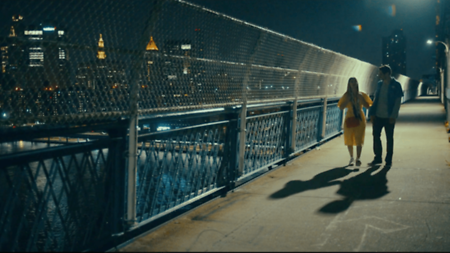Peacock's "Meet Cute" is a sci-fi rom-com in which the central character Sheila (Kaley Cuoco) uses a time-traveling tanning bed to relive the best date of her life with Gary (Pete Davidson), hoping she can help rid him of his past traumas. Cinematographer John Matysiak shares how he and director Alex Lehmann captured the film with ALEXA Mini LF cameras and ARRI Rental’s exclusive DNA LF and Prime DNA lenses.
What made you decide to shoot in large format?
This was a decision that naturally evolved through our prep and camera tests. Alex and I tested both the ALEXA Mini and ALEXA Mini LF. We had shot “Acidman” earlier in the year with the Mini, so large format with the Mini LF seemed like the next logical step for us visually with this film.
Large format brings a lot of options for playing with depth of field. Something that came about early on in prep was the idea of shifting the depth of field as the time travel becomes more and more abrupt, and the days become shorter as we move through the film. We wanted the world to become more in focus the further along we went, and then towards the end shift to a shallower depth of field the more it unraveled around Shelia.
What lens testing did you do, and why did you decide on the DNA LF series?
If I recall, we tested everything we could get our hands on. Testing lenses for me often involves raising more questions than answers. I’m always looking for something that echoes and reflects the emotion of the story. In the case of "Meet Cute," we were also exploring the overall look during this testing period, hence the range of formats and lenses.
I always find it more intuitive than technical. Obviously, there are technical reasons why something may or may not be intuitively right for a project, but for me, it’s a process of discovery. You are searching for that intangible idea, circling around it until it just clicks and you know you’ve found the combination of lenses and cameras that serves the story. I have to acknowledge my two focus pullers on the film, Geoff Storts and Logan Hall, who were such great collaborators through this testing process.




